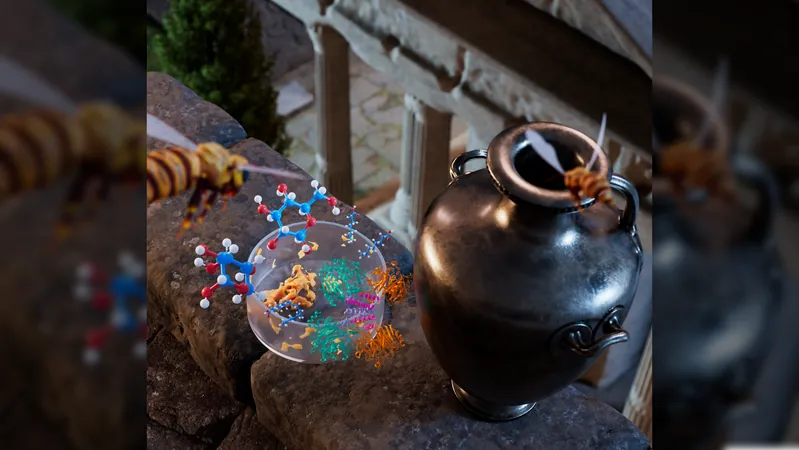
Ancient Mystery Solved: 2,500-Year-Old Honey Found in Bronze Jars!
2025-07-30
Author: Ming
A tantalizing mystery that's lingered for 70 years has finally been cracked wide open: the sticky goo trapped inside 2,500-year-old bronze jars discovered in southern Italy has been confirmed to be honey, remnants of an offering to ancient gods.
Researchers utilized state-of-the-art chemical analysis to scrutinize the syrup-like residue from jars unearthed in the ancient city of Paestum, dating back to the 6th century B.C. The findings were published in the Journal of the American Chemical Society on July 30, marking a significant breakthrough.
Lead author Luciana da Costa Carvalho of the University of Oxford highlighted the ancient Greeks' perception of honey as a 'superfood.' It was not just a sweet treat but an integral part of their medicine, rituals, cosmetics, and food. So when eight bronze jars were found in an underground shrine in 1954, it was a reasonable assumption they contained honey, long thought to symbolize immortality.
Despite numerous attempts over the decades to confirm this belief, tests had previously yielded no evidence of sugar content. But recent advances in chemical analysis breathed new life into the inquiry, prompting the team to dive back into the goo's origins.
Using mass spectrometry to identify the molecular makeup of the residue, researchers uncovered intact hexose sugars—the building blocks of honey. Remarkably, fresh honey consists of 79% hexose sugars, with fructose being the most prevalent.
Further probing into the residue revealed royal jelly—an edible secretion from worker bees—along with proteins unique to the European honeybee (Apis mellifera). These findings provide the first direct molecular evidence of honey, most likely offered in the form of honeycombs.
Curiously, Carvalho noted that the sugar content in this ancient sample was much lower than in modern honey, likening its flavor to slightly acidic washed honeycomb, though she admits she hasn’t tasted it herself.
In a fascinating twist, the analysis also detected copper ions within the honey mix. These biocidal ions could have played a role in preserving the sugars, explaining how the honey maintained its integrity over millennia.
Understanding this ancient goo not only settles a long-standing debate but shines a light on past rituals and offerings. The jars were located within a heroon, a type of underground shrine, complete with a wooden table adorned with wool-wrapped iron rods.
This offering may have been dedicated to Is of Helice, the legendary founder of the now-destroyed city of Sybaris. Following the city’s demise, the residents fled and founded Poseidonia, which would later become known as Paestum under Roman rule.
This discovery underscores the value of revisiting museum collections, as ongoing advancements in analytical techniques can reveal new insights into our history.

 Brasil (PT)
Brasil (PT)
 Canada (EN)
Canada (EN)
 Chile (ES)
Chile (ES)
 Česko (CS)
Česko (CS)
 대한민국 (KO)
대한민국 (KO)
 España (ES)
España (ES)
 France (FR)
France (FR)
 Hong Kong (EN)
Hong Kong (EN)
 Italia (IT)
Italia (IT)
 日本 (JA)
日本 (JA)
 Magyarország (HU)
Magyarország (HU)
 Norge (NO)
Norge (NO)
 Polska (PL)
Polska (PL)
 Schweiz (DE)
Schweiz (DE)
 Singapore (EN)
Singapore (EN)
 Sverige (SV)
Sverige (SV)
 Suomi (FI)
Suomi (FI)
 Türkiye (TR)
Türkiye (TR)
 الإمارات العربية المتحدة (AR)
الإمارات العربية المتحدة (AR)